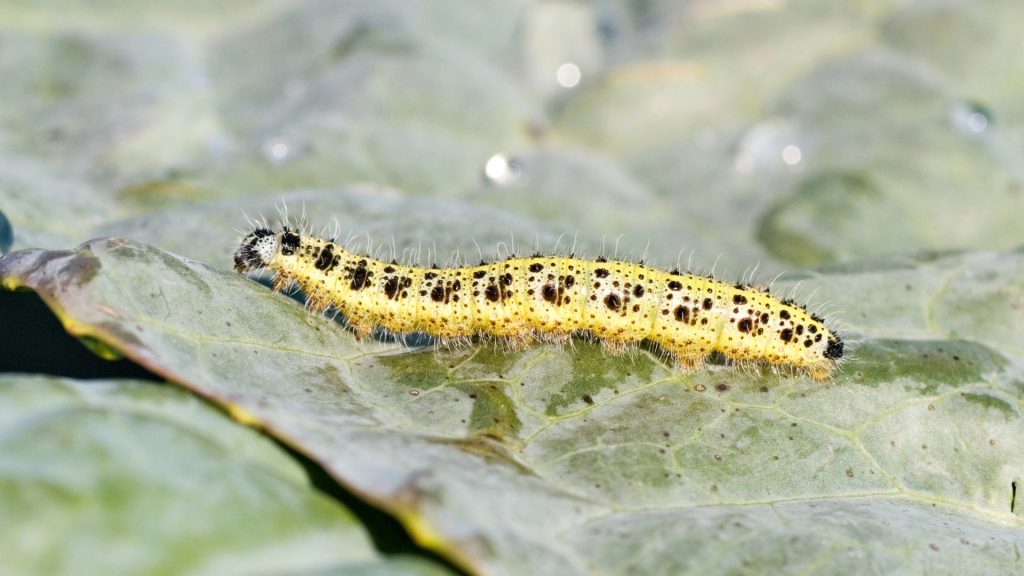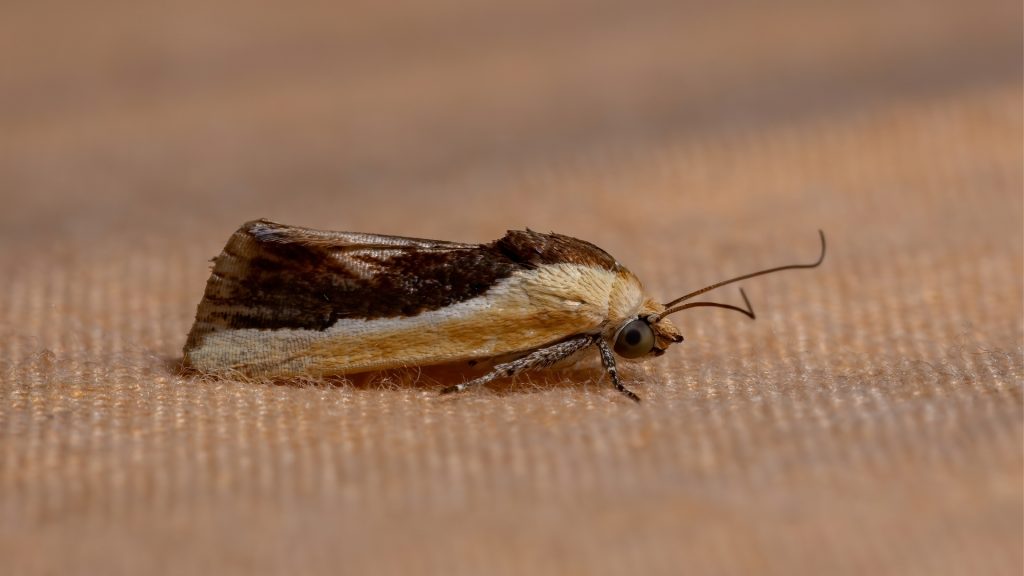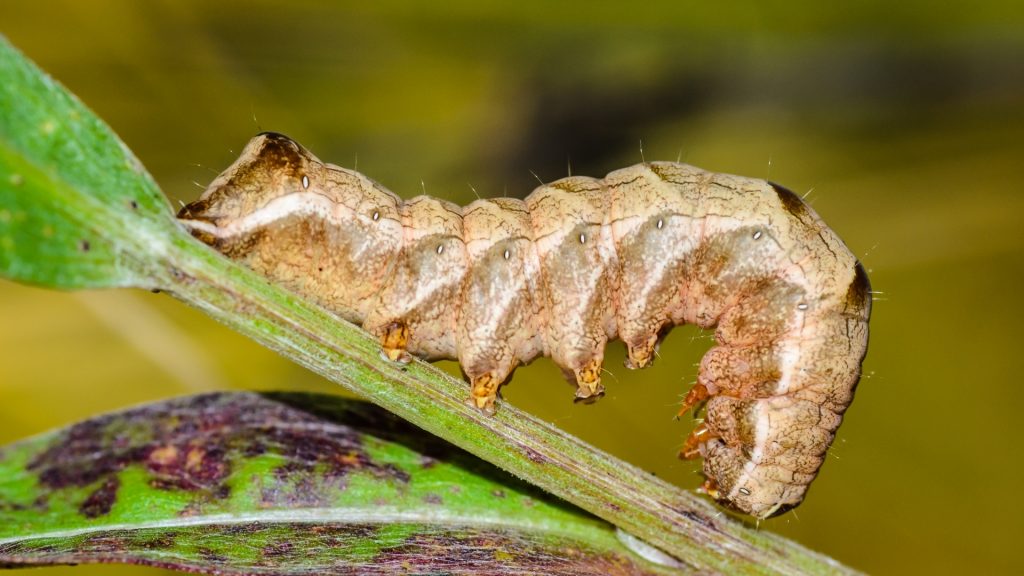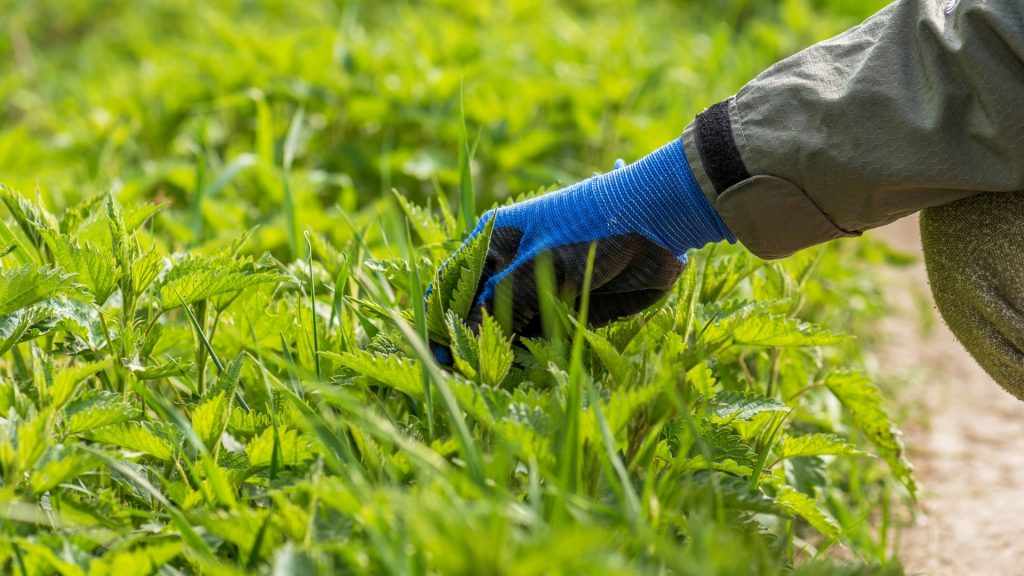First of all, cutworms are not worms but rather caterpillars. These moth larvae are called cutworms because they eat the plant stem at the surface soil, thus cutting down the plant. They usually feed at night and attack almost any kind of plant. Therefore, they are notorious pests and should be eradicated.
How can you get rid of these cutworms? You can remove them physically and drop them in soapy water. In addition, you can surround the plant or stems with irritating materials, beneficial nematodes, or barriers that prevent them from crawling to the plant. You can also use insecticides.
There are also other ways to kill cutworms. All of these strategies can be effective, depending on the severity of the problem. But of course, you want to choose the safest method.

To do so, you should first have a deep understanding of cutworms, which will be covered in this article. This includes how they look, their life cycle, and their habitat.
What Do Cutworms Look Like?

As mentioned earlier, cutworms are caterpillars. This is why its entire species has a general, greasy appearance. They are hairless creatures, and their bodies are soft, but their heads are hard. Fully-grown adults (moths) usually grow up to 40-50 mm. (1.6-2.0 inches) long and have various patterns on their wings.
Most of their species can have a uniform color such as black, brown, gray, green, tan, and pink. On the other hand, some of them are striped or spotted.
You will usually see them at night because they are hiding in the daytime. Interestingly, they curl into a tight ball or letter C when they are steady or if you will disturb them.
What Is the Life Cycle of Cutworms?

Cutworms undergo the four stages of complete metamorphosis—egg, larva, pupa, and adult.
Egg stage: Typically, female moths lay creamy-white eggs in the fall and feed the larvae on grasses and weeds near the soil surface until winter. However, some species, such as the black cutworms, lay their eggs in the spring.
Larva stage: Depending on the temperature, eggs will hatch into larvae within 2 weeks. Most cutworm larvae (newly-emerged caterpillars) have their skin covered with smooth black granules. They will undergo several molts before emerging into a pupa. It generally takes between 28 and 35 days for an egg to develop into a pupa.
Pupa stage: This usually happens in the soil, and the naked pupa will grow a hard, dark brown case, about 1 inch in length. It is initially orange-brown but will turn dark brown as it continues to grow.
Adult stage: After 12-15 days, the adult cutworm (moth) shall emerge from the pupa. The entire life cycle usually lasts 35-60 days.
How Do Cutworms Damage the Plants?

As mentioned earlier, most cutworm species eat the plant stem at the surface soil. They curl their bodies around it and will cut the plant until it falls. On the other hand, some species climb the plant and will feed on leaves and buds. Meanwhile, a few species prefer feeding on underground stems and roots.
Cutworms also prefer young plants or when plants are still small because their stems are softer. In most cases, they don’t consume the entire plant. Instead, these troublesome pests move to the next plant in the row or another row. This is why infestations are not usually uniform within a field but only in certain areas.
By nature, most cutworm species don’t choose the plants they attack. They damage corn, soybeans, tobacco, and vegetable crops such as beans, cabbage, carrots, eggplants, lettuce, peas, peppers, potatoes, onions, and tomatoes. Damage usually occurs at night because larvae hide during the day.
The larvae also attack all year round but are most active in the fall and winter. Once their numbers are high, you can expect severe damage. Note, however, that their adults (moths) don’t damage plants. Therefore, they are not pests.
Nevertheless, different species may have different habitats and styles of attack.
Common Species of Cutworms
The term cutworm refers to the larvae of various species that belong to the family of Noctuidae. Nevertheless, note that some noctuid species are not cutworms and some cutworm species are not noctuid.
Meanwhile, here are the most common species of cutworms and their important characteristics.
1. Black Cutworm
Scientifically known as Agrotis ipsilon, the black cutworm usually creates damage in cornfields and pre-existing vegetation such as weedy fields and minimum tillage. Their larvae are known to feed at night, but they may also eat during the daytime after dragging the cut portion of the plant into the small holes in the soil.
The black cutworm larvae can cut 4 corn plants during its entire lifetime and love moving from one plant to another on successive nights. They usually have a greasy texture and are mostly light gray to black.
The fully-grown larvae can grow from 1 1/4 to 1 3/4 inches in length and are very unlikely to live well in the winter.
2. Claybacked Cutworm
Scientifically known as Agrotis gladiaria, the claybacked cutworm is known to be as destructive as the black cutworm. In the early spring, they may also cause severe damage in cornfields. They spend the winter as partly-grown larvae, while the moth usually lays eggs in the fall in grassy fields.
The larvae have a broad, yellow-brown stripe on their back, hence the name. Their head is gray with dark markings.
A mature claybacked cutworm larva can grow up to 1 1/4 to 1 1/2 inches long. They also have a similar appearance and feeding habit with black cutworms and have only one generation per year.
3. Dingy Cutworm
Scientifically known as Feltia jaculifera, the dingy cutworm is often mistaken for black cutworm because they have almost the same appearance. Just like the claybacked cutworm, they also overwinter as partially grown larvae. They also damage corn fields but prefer to feed more in leaves instead of cutting the plant.
Aside from corn, the larvae also feed on miscellaneous garden vegetables, oats, tobacco, grass, and wheat. They are usually pale gray and sometimes tinged with reddish-brown.
Adults have a wingspan of 30-40 mm in length, a dark spot on the side, and V-shaped markings on the back of each abdominal segment.
4 Effective Ways to Get Rid of Cutworms in Your Garden
As mentioned above, there are lots of ways to get rid of cutworms in your garden or landscape. Generally speaking, all of them are effective. However, it will depend on some factors, including safety.
With that, let’s discuss the details of some of these strategies so you can easily choose the right one for you.
1. Remove Cutworms Manually

Removing cutworms from the garden is very easy if you are not sensitive to touching caterpillars. Again, they don’t sting humans but will curl up if you touch them. Nevertheless, it’s better to wear gloves while picking them up. But since they come in various colors and patterns, identifying them can be challenging.
After you pick them, you have lots of options to kill them. This includes dropping them in soapy water, feeding them to the birds, or simply crushing them to death. However, this technique could eat a lot of your time, especially if the infestation is widespread. In that case, you should ask someone to help you.
2. Surround the Plant With DE or Beneficial Nematodes
Another effective way to get rid of cutworms is to surround the stems or plant with materials that can irritate or kill them.
Diatomaceous earth (DE) is a natural powder made from the fossilized remains of tiny aquatic organisms. Once the cutworms come into contact with it, they will get dehydrated and eventually die.
- Natural Product - Composed of 2lbs of 100% ground freshwater...
- OMRI Listed - Listed with the Organic Minerals Research...
- Powder Duster Included - Powder duster in the bag for easy and...
- Supports a Great Cause - Harris donates 10% of profits to support...
- Made in the USA – Mined in Nevada and packaged in Georgia
On the other hand, you can also put some beneficial nematodes around the plant. These naturally occurring microscopic organisms live in soil and will attack the cutworms. This can paralyze them during their larvae and pupal stages. Once these nematodes host on cutworms, they can kill them within 24-48 hours.
Related: Diatomaceous Earth Uses as a Natural Pesticide | Tips and Guide
3. Put Barrier on the Plants

Putting barriers on the plant will prevent the cutworms from crawling to them. You can use some pieces of cardboard, aluminum foil, or paper cups to create collars.
To make sure these collars are effective against cutworms, bury them at least one inch deep around each plant stem and at least three inches high.
4. Use Insecticides
Using insecticides can also be effective, but it should be your last resort.
- Protect your oasis with Captain Jack's Bt Thuricide Ready-to-Use...
- Protects fruits, vegetables, shade trees and ornamentals;...
- Kills worms and caterpillar stage insects while causing no harm...
- Active ingredient of the product is a strain of the bacterium...
- This product arrives conveniently ready-to-use in a trigger...
As you most likely know, most insecticides contain toxic chemicals that can harm you and your plants if not used properly. If you will use them, wear proper PPE (Personal Protective Equipment) and follow the instructions on the label.
List of Sources
Hahn, J., Wold-Burkness, S. (2019). Cutworms in home gardens. University of Minnesota.
Cutworms. University of Nebraska-Lincoln.
Stoner, K. Cutworms. The Connecticut Agricultural Experiment Station.
Micic, S. (2021). Cutworm: pests of crops and pastures. Government of Western Australia – Department of Primary Industries and Regional Development.
- How to Get Rid of Copperheads | Practical Guide - August 27, 2023
- How to Get Rid of Corn Snakes | What Makes Them Aggressive? - August 27, 2023
- How to Get Rid of Alligators | Safety Measures and Removal Methods - July 16, 2023


